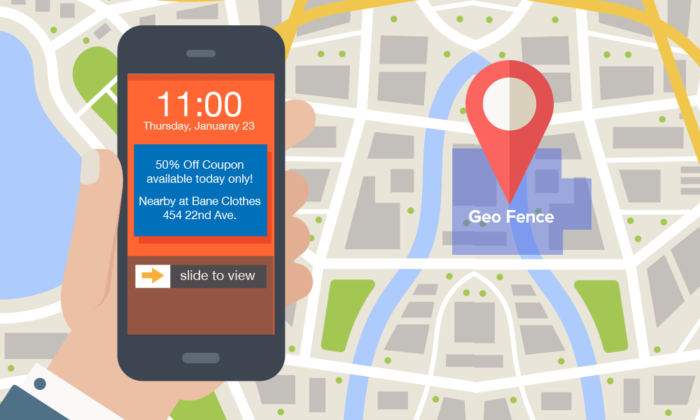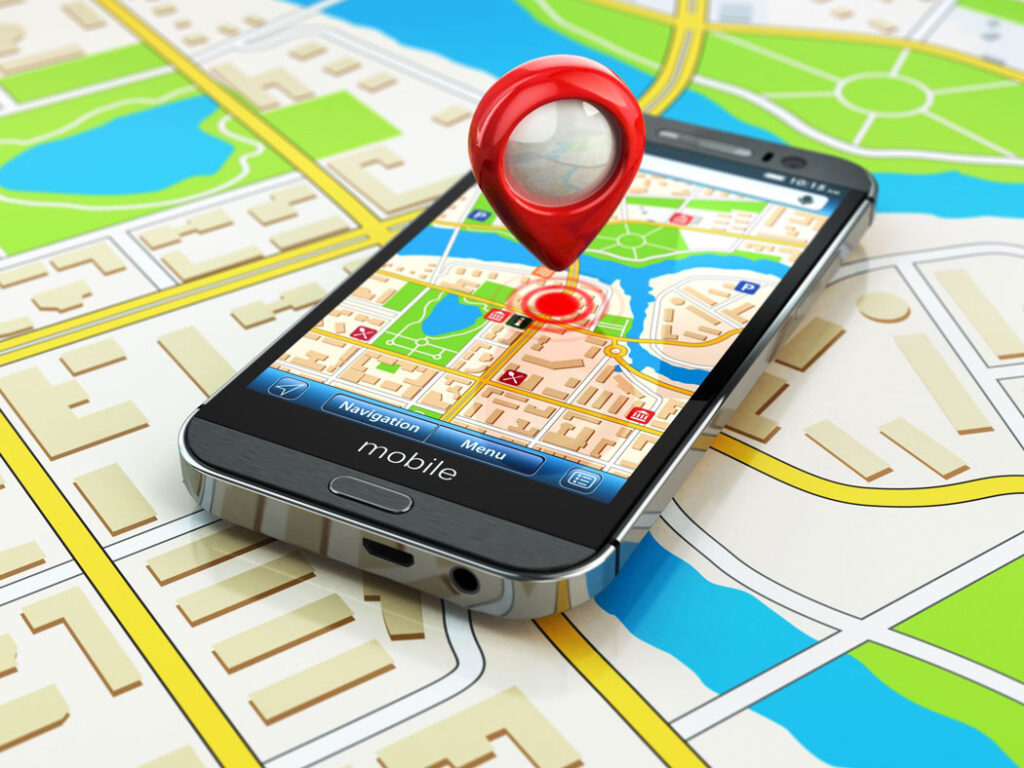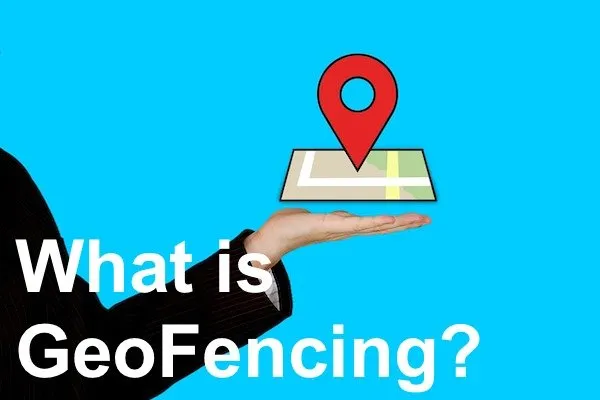Mobile Geofencing Advertising: Targeting Customers Where They Are
Are you looking to target your mobile advertising to a specific location? With mobile geofencing advertising, you can do just that. Geofencing allows businesses to set up virtual boundaries around specific locations and send targeted ads to users within that area. This technology opens up a world of possibilities for marketers, allowing them to reach potential customers with highly relevant messaging.
Whether you want to promote a new store opening, offer a limited-time discount, or simply increase brand awareness, mobile geofencing advertising can help you achieve your goals.
By reaching consumers when they are in close proximity to your business, you can increase the likelihood of converting them into customers. In this article, we will explore the benefits of mobile geofencing advertising, the different ways it can be used, and how to optimize your geofencing campaigns for maximum results. Stay tuned to discover how this powerful tool can revolutionize your mobile marketing efforts.

What is Mobile Geofencing Advertising?
Mobile geofencing advertising is a location-based marketing strategy that allows businesses to target their mobile ads to users within a specific geographical area. Geofencing technology uses GPS, Wi-Fi, or cellular data to create a virtual boundary around a physical location.
When a user enters or exits this boundary, they can receive push notifications, text messages, or in-app advertisements. This enables businesses to deliver highly targeted and personalized ads to consumers who are in close proximity to their stores or other relevant locations.

How Does Mobile Geofencing Advertising Work?
At its core, mobile geofencing advertising relies on the use of geolocation data to trigger the delivery of ads. When a user’s device enters the geofenced area, their location is detected, and the relevant ad is sent to their device.
This can be done through a mobile app, mobile website, or even through third-party apps that have partnered with advertisers. The technology behind geofencing is continuously evolving, allowing for more precise targeting and real-time updates.
To implement mobile geofencing advertising, businesses need to define the geographical boundaries of their target area and set up a campaign with a mobile advertising platform. They can then create compelling ad creatives that are designed to capture the attention of users in the target area. Once the campaign is live, the platform will use location data to identify users within the geofence and deliver the ads accordingly.

Benefits of Mobile Geofencing Advertising
Mobile geofencing advertising offers a range of benefits for businesses looking to reach their target audience in a highly effective and efficient manner. Here are some of the key advantages of using geofencing in your mobile marketing strategy:
- Hyper-local targeting: Geofencing allows businesses to target their advertisements to a specific location, ensuring that their messaging reaches users who are most likely to be interested in their products or services.
- Increased relevance: By delivering ads to users when they are in close proximity to a business, geofencing ensures that the messaging is highly relevant and timely. This increases the chances of users engaging with the ad and taking the desired action.
- Improved conversion rates: When users receive targeted ads while they are near a business, they are more likely to convert into customers. The convenience and immediacy of being in close proximity to the advertised products or services can significantly impact their purchasing decisions.
- Enhanced brand awareness: Geofencing allows businesses to raise awareness of their brand among users who are physically present in their target area. This can help increase brand recognition and encourage future visits or purchases.
- Cost-effective advertising: Compared to traditional forms of advertising, geofencing can be a cost-effective solution. Businesses can focus their advertising budget on a specific area, ensuring that their ads are seen by users who are most likely to convert.
- Real-time data and analytics: Geofencing platforms provide businesses with valuable data and insights about user behavior within the target area. This data can be used to refine and optimize future advertising campaigns for maximum effectiveness.
Overall, mobile geofencing advertising enables businesses to reach their target audience with highly relevant and impactful messaging, leading to increased brand awareness, customer engagement, and conversions.

Mobile Geofencing Advertising Statistics
To understand the impact and potential of mobile geofencing advertising, let’s take a look at some key statistics:
- According to a study by Blis, 80% of consumers are more likely to engage with personalized ads that are relevant to their location.
- Research by Thinknear revealed that 53% of consumers are more likely to visit a store if they receive a location-based ad while in close proximity.
- In a survey conducted by Verve, 71% of consumers said they were more likely to make a purchase if they received a personalized location-based offer.
- The same survey found that 82% of consumers have engaged with a location-based ad on their mobile device.
These statistics highlight the significant impact that mobile geofencing advertising can have on consumer behavior and purchasing decisions. By leveraging the power of location-based targeting, businesses can effectively engage with their target audience and drive meaningful results.

Mobile Geofencing Advertising Strategy
To make the most of mobile geofencing advertising, it is essential to have a well-thought-out strategy in place. Here are the key steps to creating an effective geofencing advertising plan:
1. Define your target area
Start by identifying the specific locations where you want to target your ads. Consider factors such as your target audience’s demographics, behavior, and proximity to your business. This will help you determine the optimal size and shape of your geofence.
2. Understand your target audience
Gain a deep understanding of your target audience’s preferences, interests, and needs. This will enable you to create highly relevant and compelling ad creatives that resonate with your potential customers.
3. Craft compelling ad creatives
Create visually appealing and engaging ad creatives that capture the attention of users within the geofenced area. Use clear and concise messaging that highlights the unique value proposition of your products or services.
4. Set clear objectives and KPIs
Establish clear objectives for your geofencing advertising campaign, such as increasing foot traffic, driving online sales, or boosting brand awareness. Define key performance indicators (KPIs) to measure the success of your campaign and track progress towards your goals.
5. Optimize your campaign
Regularly monitor and analyze the performance of your geofencing advertising campaign. Use the insights gained from data and analytics to make informed decisions and optimize your ads for maximum effectiveness. This could involve adjusting the targeting parameters, refining ad creatives, or experimenting with different messaging strategies.
6. Test and iterate
Continuously test and iterate your geofencing advertising campaigns to find the most effective strategies for your business. Experiment with different geofences, ad formats, and messaging to identify what resonates best with your target audience. Regularly review the performance of your campaigns and make data-driven adjustments as needed.
By following these steps and continuously refining your geofencing advertising strategy, you can maximize the impact of your campaigns and achieve your marketing objectives.
Mobile Geofencing Advertising Tips
To help you get started with mobile geofencing advertising, here are some practical tips to keep in mind:
- Keep your geofences relevant: Ensure that your geofences are appropriately sized and accurately reflect the areas where your target audience is located. Overly broad or inaccurate geofences can result in wasted advertising spend and ineffective targeting.
- Personalize your messaging: Tailor your ad messaging to the specific location and context in which users will receive it. Consider incorporating local references, offers, or incentives to make your ads more appealing and relevant.
- Leverage real-time triggers: Take advantage of real-time triggers to deliver ads that are time-sensitive and contextually relevant. For example, you can send a special promotion to users who have just entered a competitor’s store or offer a discount to users who are near your store during a specific time window.
- Use A/B testing: Experiment with different ad creatives, messaging, and targeting parameters to identify what works best for your target audience. Test multiple variations of your ads and analyze the performance data to refine your campaigns over time.
- Track and measure results: Use advanced analytics tools to track the performance of your geofencing campaigns. Measure key metrics such as click-through rates, conversion rates, and return on investment (ROI) to gain insights into the effectiveness of your ads and make data-driven decisions.
By implementing these tips, you can optimize your mobile geofencing advertising campaigns for maximum impact and drive meaningful results for your business.

Examples of Successful Mobile Geofencing Advertising Campaigns
To inspire your own geofencing advertising efforts, let’s explore some examples of successful campaigns:
- Starbucks: Starbucks used geofencing to target users who were within a certain distance from their stores. They sent push notifications with personalized offers to encourage users to visit and make a purchase. This campaign resulted in a significant increase in foot traffic and sales.
- Nike: Nike leveraged geofencing to target users near their retail stores during major sporting events. They sent location-based ads promoting their latest sports apparel and equipment. This strategy helped drive foot traffic to their stores and generated buzz among sports enthusiasts.
- McDonald’s: McDonald’s used geofencing to promote their new product offerings. They targeted users near their stores with mobile ads featuring limited-time discounts and special promotions. This campaign successfully attracted new customers and increased sales for the featured products.
These examples demonstrate the versatility and effectiveness of mobile geofencing advertising when used strategically. By understanding your target audience and tailoring your messaging to their specific needs and interests, you can create impactful campaigns that drive results.

Mobile Geofencing Advertising Platforms and Tools
To implement mobile geofencing advertising, you can leverage a range of platforms and tools that offer geofencing capabilities. Here are some popular options:
- Google Ads: Google Ads allows you to create geofenced campaigns that target users based on their location. You can define custom geofences or target specific geographic areas such as cities, regions, or countries.
- Facebook Ads: Facebook Ads offers location targeting options that include geofencing. You can target users within a specific radius of your business or create custom geofences around specific locations.
- AdRoll: AdRoll provides geofencing capabilities that allow you to target users based on their physical location. You can create custom geofences or target predefined areas such as airports, shopping malls, or popular tourist destinations.
- GroundTruth: GroundTruth is a mobile advertising platform that specializes in location-based marketing. It offers advanced geofencing capabilities, including the ability to create custom geofences and target users based on their real-time location.
These platforms and tools provide the necessary infrastructure and features to implement effective geofencing advertising campaigns. Depending on your specific needs and budget, you can choose the one that best aligns with your marketing objectives.

Conclusion
Mobile geofencing advertising is a powerful tool that enables businesses to target their mobile ads to users within specific locations. By leveraging the precision of geolocation data, businesses can deliver highly relevant and timely ads to potential customers who are in close proximity to their stores or other relevant locations.
The benefits of mobile geofencing advertising include hyper-local targeting, increased relevance, improved conversion rates, enhanced brand awareness, cost-effective advertising, and access to real-time data and analytics.
By following a well-defined strategy, incorporating best practices, and leveraging the right platforms and tools, businesses can harness the full potential of mobile geofencing advertising and achieve their marketing objectives. So, get ready to step up your mobile marketing game and unlock the power of geofencing to reach your target audience where they are.


